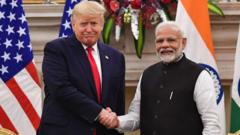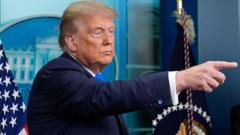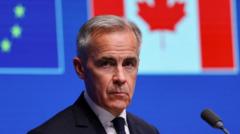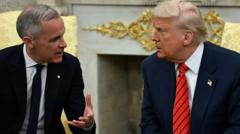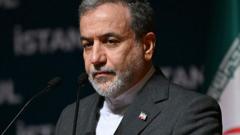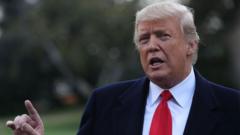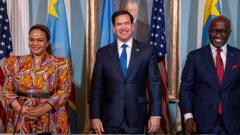The new trade deal between the US and UK aims to relieve certain tariffs imposed by President Trump but retains significant duties on most imports, raising questions about its effectiveness and future implications for key industries.
US-UK Forge New Trade Agreement Amidst Ongoing Tariff Struggles
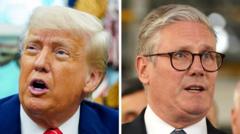
US-UK Forge New Trade Agreement Amidst Ongoing Tariff Struggles
The US and UK announce a trade agreement reducing tariffs on cars and metals, yet concerns linger about its overall impact on bilateral trade.
The United States and the United Kingdom have reached a new trade agreement that reduces tariffs on a select number of British automobiles and permits some steel and aluminum imports tariff-free. This development is intended to provide relief for vital UK industries, which have been adversely affected by tariffs imposed by President Donald Trump since his return to power. Although the deal is seen as a positive step, it still retains a 10% duty on the vast majority of UK goods.
While both nations’ leaders branded the agreement as significant, market analysts indicated that it does not fundamentally change the previously established terms of trade disrupted by Trump's recent tariffs. No formal paperwork was signed during the announcement, and details concerning the agreement remain sparse.
Addressing an audience from a Jaguar Land Rover facility in the West Midlands, UK Opposition Leader Sir Keir Starmer termed the agreement a "fantastic platform," emphasizing that it safeguards numerous British jobs in critical sectors such as car manufacturing and steel. In contrast, Trump described the arrangement as a "great deal" and responded to critics by asserting its projected potential.
The specifics of the agreement reveal that tariffs on imported cars—previously raised by 25%—will now be capped at 10% for a quota of 100,000 vehicles per year, which centers around high-end manufacturers like Jaguar Land Rover and Rolls Royce. Business Secretary Jonathan Reynolds noted the urgency of the situation, warning that thousands of jobs in the automotive sector were at risk without progress in negotiations.
In addition, tariffs of 25% on steel and aluminum will be replaced with a quota system, reminiscent of past arrangements. Both nations have also agreed to allow up to 13,000 metric tonnes of beef to be traded without tariffs, dramatically increasing US beef exports to the UK, which were previously hindered by a 20% tariff and a 1,000 metric tonnes cap.
While UK Steel Director General Gareth Stace viewed the agreement favorably as a "major relief" for the steel industry, other business representatives expressed hesitation regarding the overall impact. Duncan Edwards, head of BritishAmerican Business, remarked that while the development was better than the immediate past, it paled in comparison to pre-existing trade scenarios.
Political reactions have varied, with Labour MPs applauding the agreement while opposing factions called for greater transparency and oversight. Conservative leader Kemi Badenoch criticized the deal, claiming it represented a UK concession while tariffs remained elevated in the US. The Liberal Democrats have called for parliamentary voting on the new terms, emphasizing the need for public representation in trade matters.
Looking ahead, the agreement marks a continuation of US-UK trade discussions that have persisted since Trump’s first term, highlighting longstanding pressures for concessions favoring American farmers, particularly in agriculture and pharmaceuticals. The National Cattlemen's Beef Association lauded the deal as a significant win for US ranchers, while uncertainties linger about how pharmaceutical trade will evolve under the new arrangements.
Ultimately, the deal indicates movement in trade relations, but as experts note, the ramifications largely hinge on the specifics that have yet to be fully addressed.


